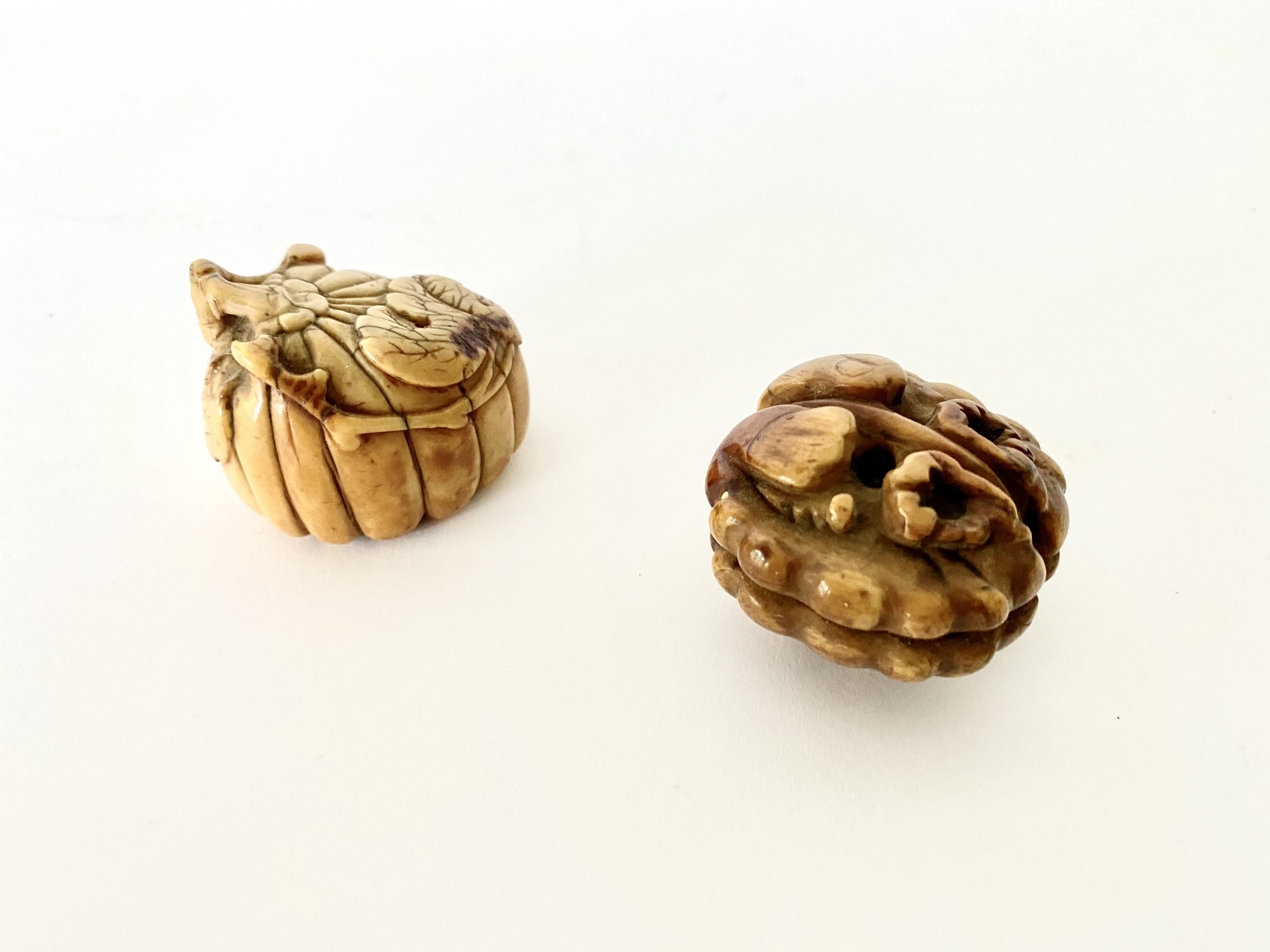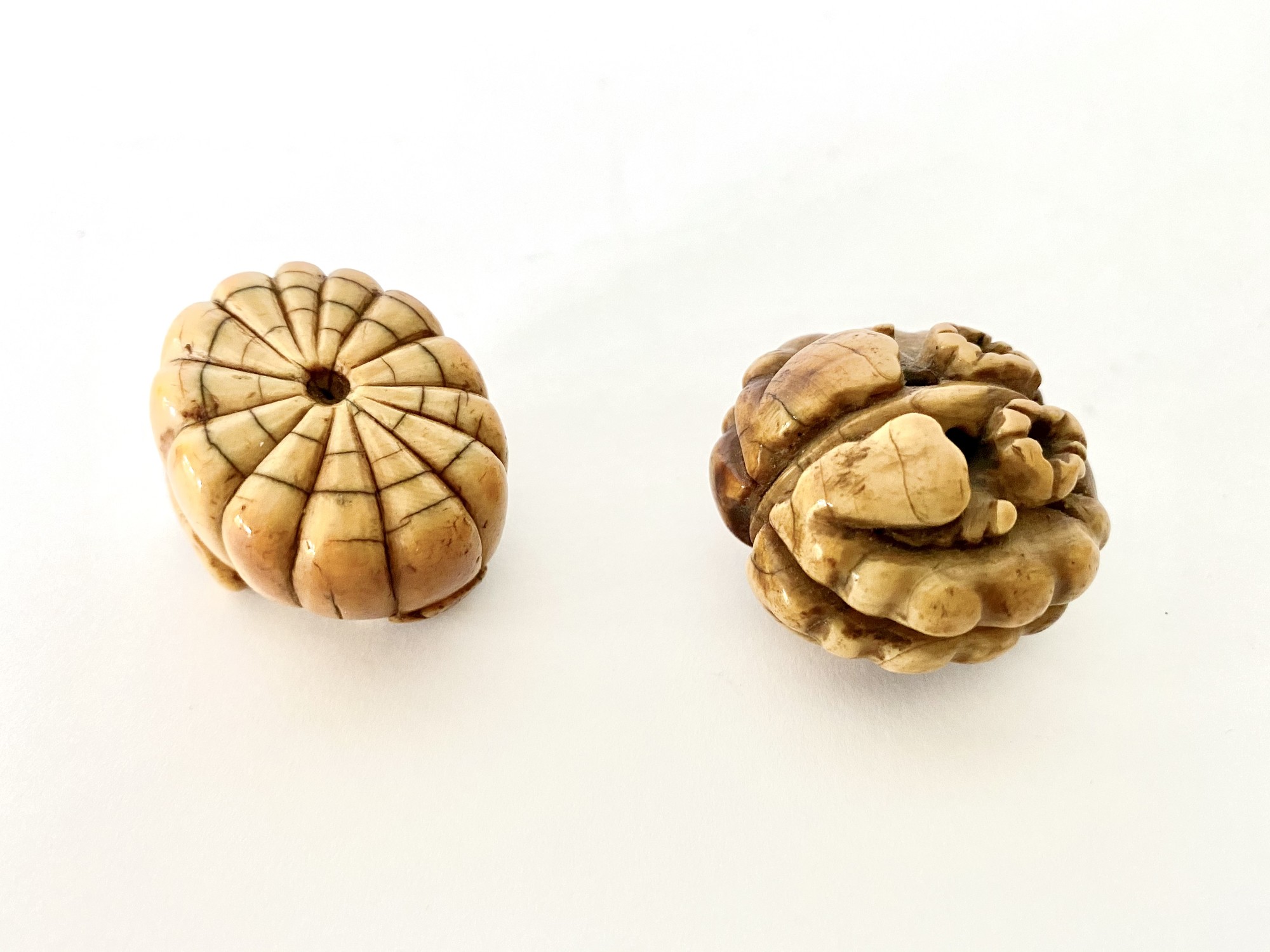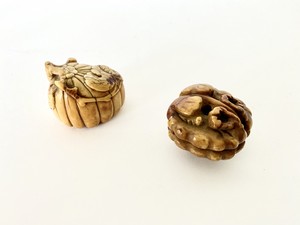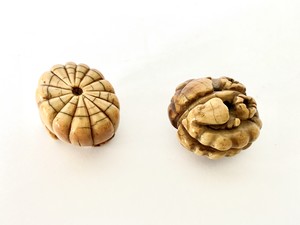17th/18th century
One toggle is carved in the form of a round melon 瓜 (gua) growing from a gnarled branch with a withered leaf. The second Ivory toggle is carved as a walnut, 核桃(hetao) showing its two halves. Both have a rich warm patina
Each ca 3.7 cm
Chinese belt toggles are often mistaken for Japanese netsuke. Both kinds of carvings have a similar function as counterweights on the cords of small bags hung on men's belts.They have one or two 'string eyes' which could pass a cord. They are made in all kinds of natural materials including wood, ivory, jade, porcelain etc. Most of them have an auspicious and symbolic meaning.
The toggle in the form of a melon symbolises a wish for many sons as it is full of seeds. The walnut is carved showing its two halves which stands for harmony and unity 和和(hehe). It is also a symbol of intelligence and wisdom and even looks like brains
Provenance: An old Dutch collection acquired in the 1930s
WF 73 十七/十八世紀 象牙墜飾兩件
時代:17/18世紀。
特徵:其中一件墜飾雕刻成帶葉的圓瓜形狀,另一件則呈核桃造型。
尺寸:約3.7公分。
來源:荷蘭私人藏家於1930年代獲得之舊藏。




